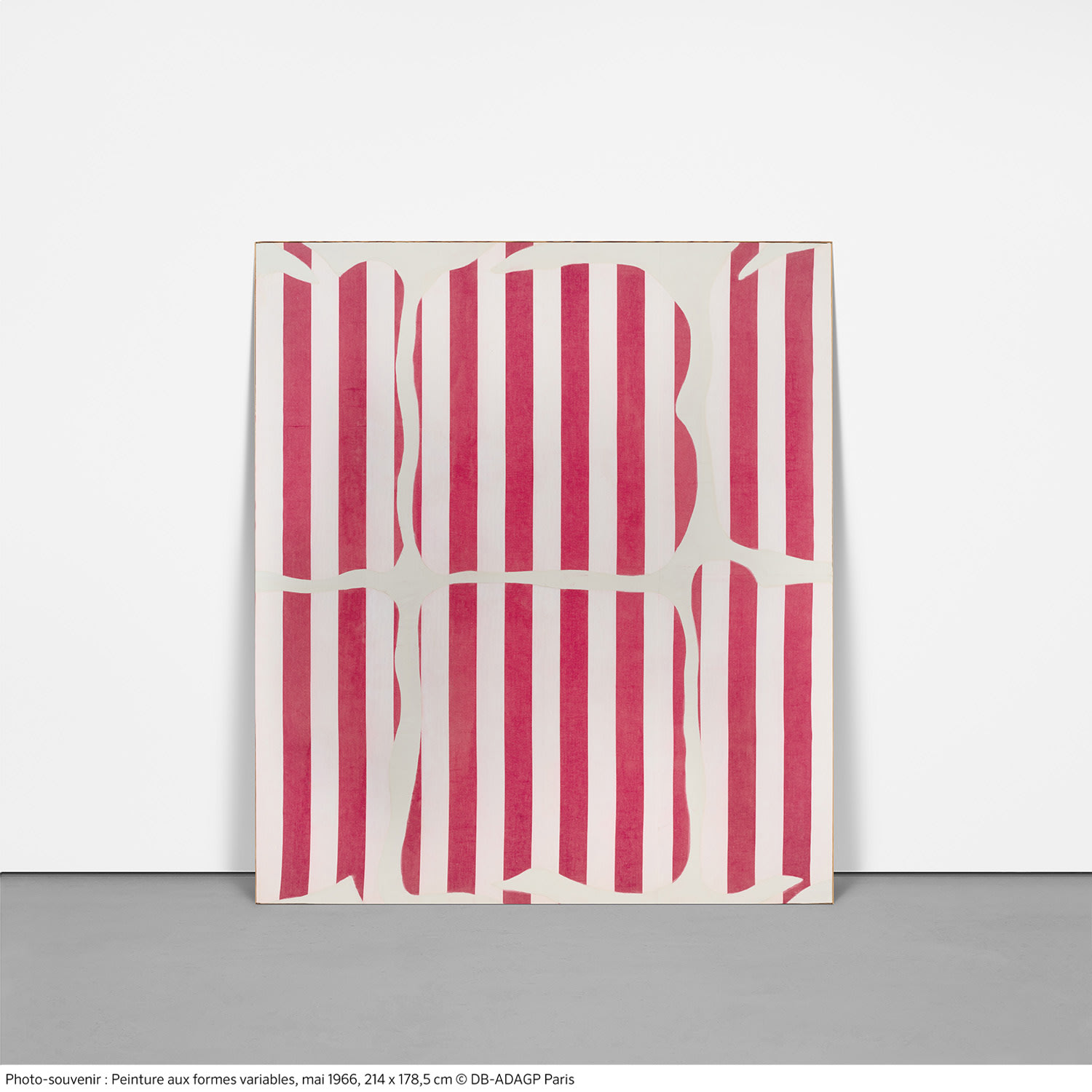

36Ο◆
Daniel Buren
Peinture aux formes variables
inscribed and dated ‘215 x 180 cm MAI 66’ on the overlap
paint on cotton cloth woven with red and white stripes, alternating and vertical 8.7 cm wide each
206 x 180 cm (81 1/8 x 70 7/8 in.)
Painted in May 1966. This work is accompanied by a certificate of authenticity, known as an ‘Avertissement,’ which will be delivered by the artist in the name of the new buyer.